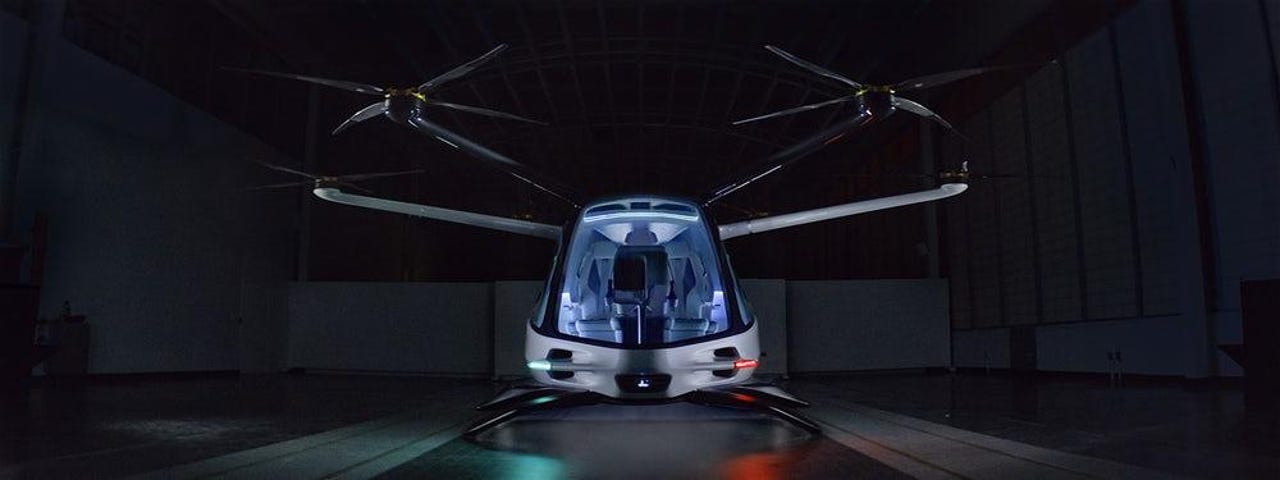Hydrogen-powered air taxi? Yup, it's real


It wasn't that long ago that demos of hydrogen vehicles involved someone wearing an electrostatic protective suit. And flight, although ludicrously safe as practiced in commercial aviation, just feels inherently risky.
So it was with a raised eyebrow and slow clap of admiration that I got to preview a first-of-its-kind electric vertical takeoff and landing (eVTOL) vehicle designed for passenger use and powered by hydrogen fuel cells.
The vehicle is called Skai, and its maker is Alaka'i Technologies, an air mobility design and manufacturing company headquartered in Hopkinton, MA. The company's executive team has been working together in aerospace since the 1990s and boasts impressive resume lines from places like NASA, Raytheon, Hughes, and other aviation heavyweights. The founding philosophy is to create "progressive air mobility solutions to offer point A-to-Anywhere transportation that are clean, simple, safe, and accessible for everyone."
Which brings us back to a giant hydrogen-powered drone that you can sit in with four of your closest friends. The six-rotor aircraft, which Alaka'i debuted in a mocked-up version in LA at BMW Designworks this week, will be able to haul 1000 pounds and speed along above traffic at 118 MPH following a vertical takeoff. As aircraft go, that's not very fast, but Alaka'i sees Skai as a workhorse vehicle, able to take short hops with maximum efficiency and minimum fuel consumption. The system can be piloted onboard or from the ground, or it can fly autonomously.
The company is staying mum about the specifics of its battery and drivetrain technology. A spokesperson suggested liquid hydrogen fuel cells contain up to to 200 times more energy than conventional batteries by weight, and the Skai will have a range of about 400 miles over four hours of flying, which is significantly longer than Bell's Air-Taxi, which has a range of just 150 miles. Hydrogen is also environmentally clean, at least at the point of propulsion, emitting water and heat as byproducts. Still, the technology has been slow to catch on in terrestrial vehicles, and Alaka'i is taking a gamble basing its platform around fuel cell technology.
A more pressing problem may be FAA clearance, which Alaka'i doesn't have yet. Early publicity has been touting the platform's safety features, including an air frame parachute, redundant fuel cells, and electromagnetic and lightning protection for the controls.
The anticipated early use case also has FAA clearance in mind. While passenger pickup is clearly where Skai is headed, the company plans to focus on emergency response and freight distribution first, which lower bars for FAA scrutiny.
The most ambitious thing about Skai may be the timeline. The company believes it could have FAA approval as soon as 2020 and kickstart commercial production soon after, pacing it well ahead of years-long estimates given by competitors Lilium and Bell. The target price for the flying vehicles will be somewhere around $200,000, a testament to falling hardware costs.